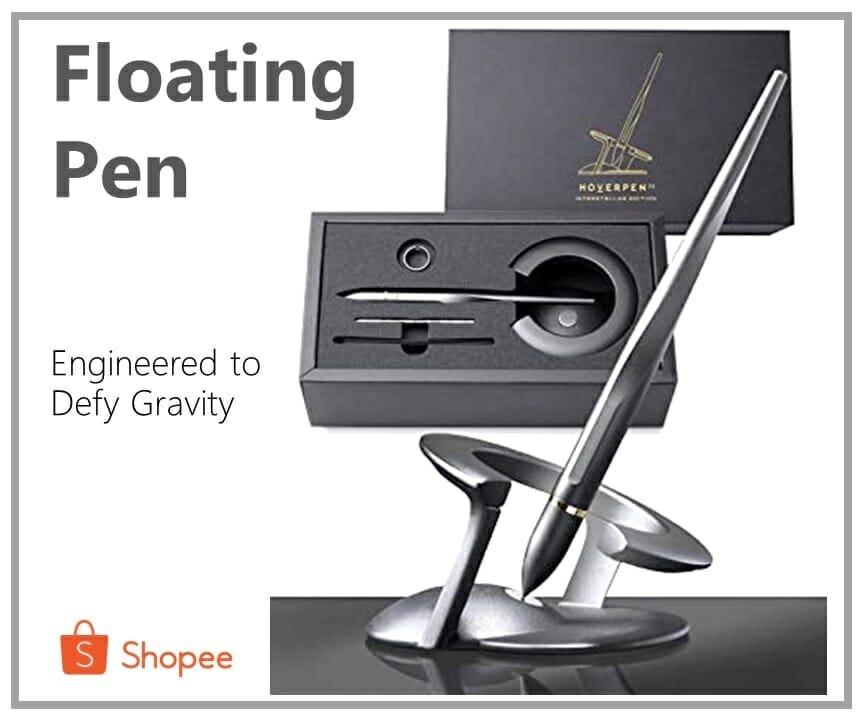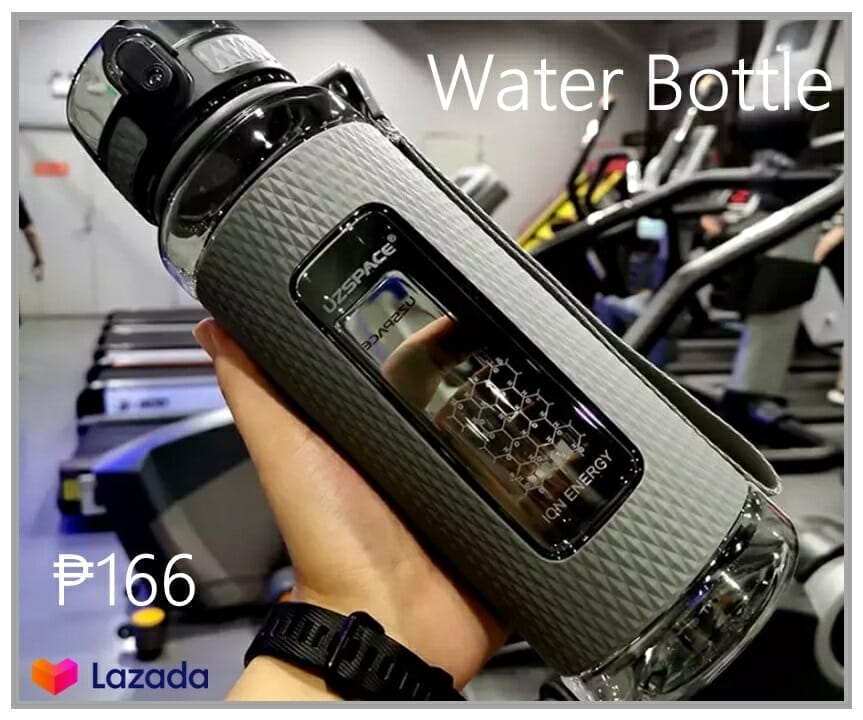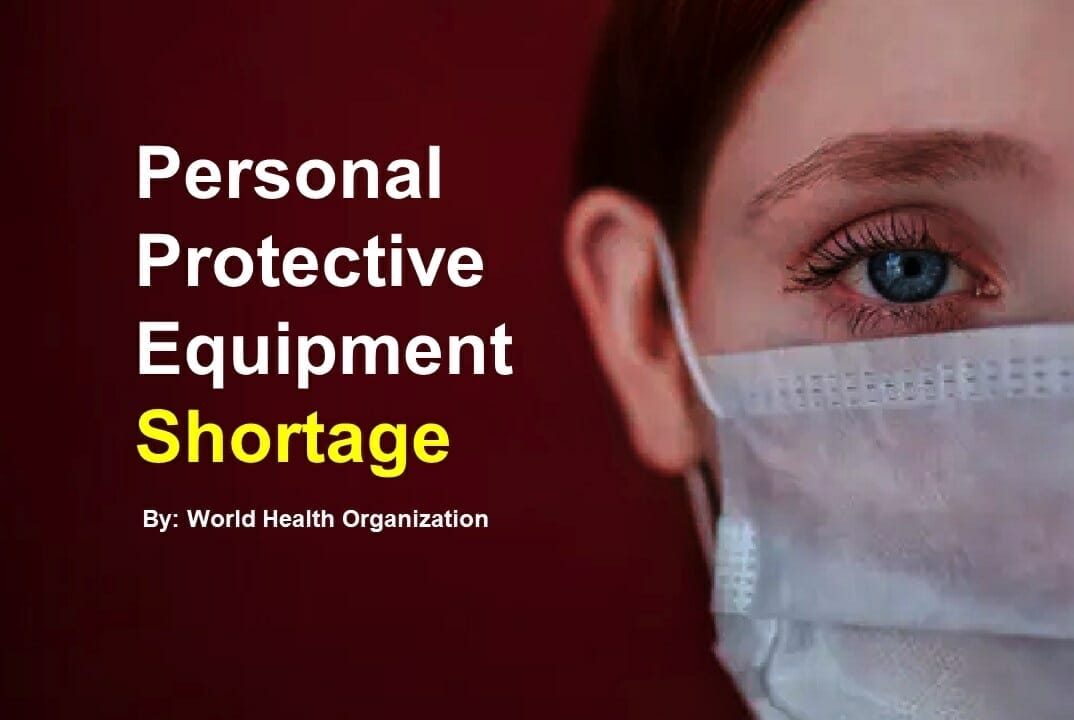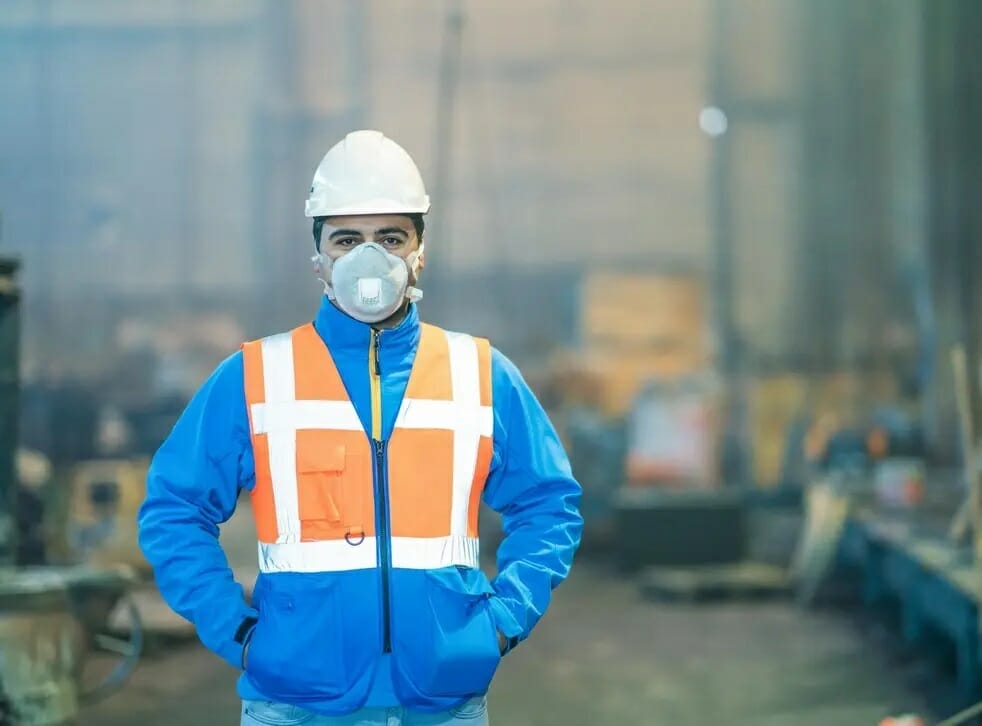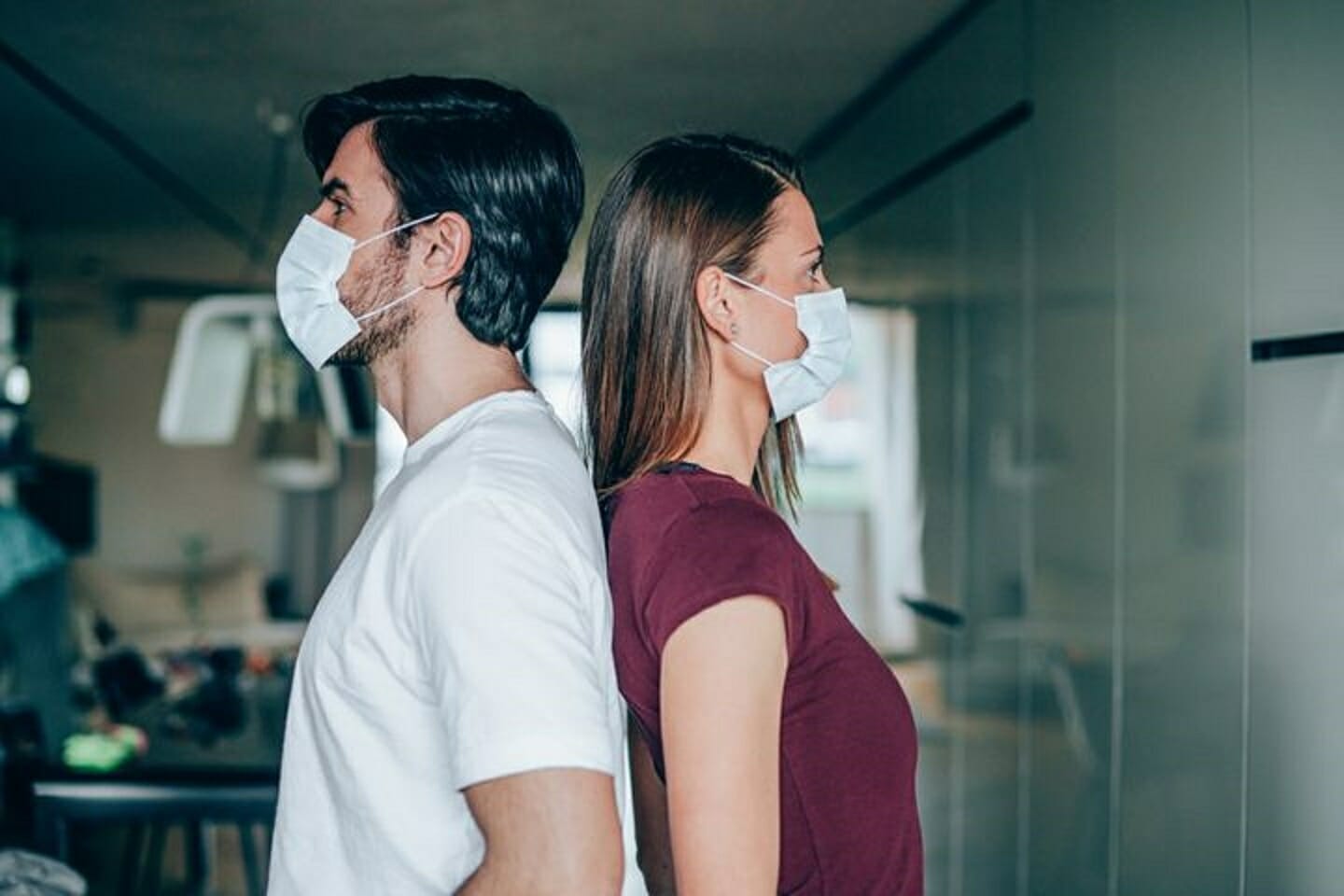Personal Protective Equipment proper usage
This article is written by World Health Organization. Here’s the full report from WHO.
Coronavirus disease 2019 (COVID-19), caused by the COVID-19 virus, was first detected in Wuhan, China, in December 2019. On 30 January 2020, the WHO Director-General declared that the current outbreak constituted a public health emergency of international concern.
This document summarizes WHO’s recommendations for the rational use of personal protective equipment (PPE) in healthcare and community settings, as well as during the handling of cargo; in this context, PPE includes gloves, medical masks, goggles or a face shield, and gowns, as well as for specific procedures, respirators (i.e., N95 or FFP2 standard or equivalent) and aprons. This document is intended for those who are involved in distributing and managing PPE, as well as public health authorities and individuals in healthcare and community settings, and it aims to provide information about when PPE use is most appropriate.
WHO will continue to update these recommendations as new information becomes available.

Preventive measures for COVID-19 disease
Based on the available evidence, the COVID-19 virus is transmitted between people through close contact and droplets, not by airborne transmission. The people most at risk of infection are those who are in close contact with a COVID-19 patient or who care for COVID-19 patients.
Preventive and mitigation measures are key in both healthcare and community settings. The most effective preventive measures in the community include:
- performing hand hygiene frequently with an alcohol-based hand rub if your hands are not visibly dirty or with soap and water if hands are dirty;
- avoiding touching your eyes, nose and mouth;
- practicing respiratory hygiene by coughing or sneezing into a bent elbow or tissue and then immediately disposing of the tissue;
- wearing a medical mask if you have respiratory symptoms and performing hand hygiene after disposing of the mask;
- maintaining social distance (a minimum of 1 m) from individuals with respiratory symptoms.
Additional precautions are required by healthcare workers to protect themselves and prevent transmission in the healthcare setting. Precautions to be implemented by healthcare workers caring for patients with COVID-19 disease include using PPE appropriately; this involves selecting the proper PPE and being trained in how to put on, remove and dispose of it.
PPE is only one effective measure within a package that comprises administrative and environmental and engineering controls, as described in WHO’s Infection prevention and control of epidemic- and pandemic-prone acute respiratory infections in health care (1). These controls are summarized here.
- Administrative controls include ensuring the availability of resources for infection prevention and control measures, such as appropriate infrastructure, the development of clear infection prevention and control policies, facilitated access to laboratory testing, appropriate triage and placement of patients, adequate staff-to-patient ratios and training of staff.
- Environmental and engineering controls aim at reducing the spread of pathogens and reducing the contamination of surfaces and inanimate objects. They include providing adequate space to allow social distance of at least 1 m to be maintained between patients and between patients and healthcare workers and ensuring the availability of well-ventilated isolation rooms for
patients with suspected or confirmed COVID-19 disease.
COVID-19 is a respiratory disease that is different from Ebola virus disease, which is transmitted through infected bodily fluids. Due to these differences in transmission, the PPE requirements for COVID-19 are different from those required for Ebola virus disease. Specifically, coveralls (sometimes called Ebola PPE) are not required when managing COVID-19 patients.

Disruptions in the global supply chain of PPE
The current global stockpile of PPE is insufficient, particularly for medical masks and respirators; the supply of gowns and goggles is soon expected to be insufficient also. Surging global demand − driven not only by the number of COVID-19 cases but also by misinformation, panic buying and stockpiling − will result in further shortages of PPE globally. The capacity to expand PPE production is limited, and the current demand for respirators and masks cannot be met, especially if the widespread, inappropriate use of PPE continues.
Recommendations for optimizing the availability of PPE.
In view of the global PPE shortage, the following strategies can facilitate optimal PPE availability (Fig. 1).
Fig. 1. Strategies to optimize the availability of personal protective equipment (PPE)

(1) Minimize the need for PPE
The following interventions can minimize the need for PPE while protecting healthcare workers and other individuals from exposure to the COVID-19 virus in healthcare settings.
- Consider using telemedicine to evaluate suspected cases of COVID-19 disease (2), thus minimizing the need for these individuals to go to healthcare facilities for evaluation.
- Use physical barriers to reduce exposure to the COVID-19 virus, such as glass or plastic windows. This approach can be implemented in areas of the healthcare setting where patients will first present, such as triage areas, the registration desk at the emergency department or at the pharmacy window where medication is collected.
- Restrict healthcare workers from entering the rooms of COVID-19 patients if they are not involved in direct care. Consider bundling activities to minimize the number of times a room is entered (e.g., check vital signs during medication administration or have food delivered by healthcare workers while they are performing other care) and plan which activities will be performed at the bedside.
Ideally, visitors will not be allowed but if this is not possible, restrict the number of visitors to areas where COVID-19 patients are being isolated; restrict the amount of time visitors are allowed to spend in the area; and provide clear instructions about how to put on and remove PPE and perform hand hygiene to ensure visitors avoid self-contamination (see https://www.who.int/csr/resources/publications/putontakeoff).
(2) Ensure PPE use is rationalized and appropriate
PPE should be used based on the risk of exposure (e.g., type of activity) and the transmission dynamics of the pathogen (e.g., contact, droplet or aerosol). The overuse of PPE will have a further impact on supply shortages. Observing the following recommendations will ensure that the use of personal protective equipment rationalized.
- The type of PPE used when caring for COVID-19 patients will vary according to the setting and type of personnel and activity (Table 1).
- Healthcare workers involved in the direct care of patients should use the following PPE: gowns, gloves, medical mask and eye protection (goggles or face shield).
- Specifically, for aerosol-generating procedures (e.g., tracheal intubation, non-invasive ventilation, tracheostomy, cardiopulmonary resuscitation, manual ventilation before intubation, bronchoscopy) healthcare workers should use respirators, eye protection, gloves and gowns; aprons should also be used if gowns are not fluid resistant (1).
- Respirators (e.g., N95, FFP2 or equivalent standard) have been used for an extended time during previous public health emergencies involving acute respiratory illness when PPE was in short supply (3). This refers to wearing the same respirator while caring for multiple patients who have the same diagnosis without removing it, and evidence indicates that respirators maintain their protection when used for extended periods. However, using one respirator for longer than 4 hours can lead to discomfort and should be avoided (4−6).
- Among the general public, persons with respiratory symptoms or those caring for COVID-19 patients at home should receive medical masks. For additional
information, see Home care for patients with suspected novel coronavirus (COVID-19) infection presenting with mild symptoms, and management of their contacts (7). - For asymptomatic individuals, wearing a mask of any type is not recommended. Wearing medical masks when they are not indicated may cause unnecessary cost and a procurement burden and create a false sense of security that can lead to the neglect of other essential preventive measures. For additional information, see Advice on the use of masks in the community, during home care and in healthcare settings in the context of the novel coronavirus (2019-nCoV) outbreak (8).

(3) Coordinate PPE supply chain management mechanisms.
The management of PPE should be coordinated through essential national and international supply chain management mechanisms that include but are not restricted to:
- using personal protective equipment forecasts that are based on rational quantification models to ensure the rationalization of requested supplies;
- monitoring and controlling personal protective equipment requests from countries and large responders;
- promoting the use of a centralized request management approach to avoid duplication of stock and ensuring strict adherence to essential stock management rules to limit wastage, overstock and stock ruptures;
- monitoring the end-to-end distribution of personal protective equipment;
- monitoring and controlling the distribution of personal protective equipment from medical facilities stores.
Handling cargo from affected countries
The rationalized use and distribution of PPE when handling cargo from and to countries affected by the COVID-19 outbreak includes following these recommendations.
- Wearing a mask of any type is not recommended when handling cargo from an affected country.
- Gloves are not required unless they are used for protection against mechanical hazards, such as may occur when manipulating rough surfaces. Importantly, the use of gloves does not replace the need for appropriate hand hygiene, which should be performed frequently, as described above.
- When disinfecting supplies or pallets, no additional personal protective equipment is required beyond what is routinely recommended. To date, there is no epidemiological information to suggest that contact with goods or products shipped from countries affected by the COVID-19 outbreak have been the source of COVID-19 disease in humans. WHO will continue to closely monitor the evolution of the COVID-19
outbreak and will update recommendations as needed.
Watch Live Stream & Real Time Statistics of COVID-19
Other COVID-19 Updates
Tiger Tests Positive for Coronavirus at New York Zoo
Harvard Talks: Cut Salaries or Cut People?
Lamborghini Medical Shields & Surgical Masks for Health Workers
WHO COVID-19 Buildings & Tents Screening Layout Standards
UCLA Engineer Made a Ventilator from Hardware Items
Airbus Gives 3D-Printed Hospital Visors to Health Workers
Airlines COVID-19 Analysis: Aviation Collapsed
Forecast Deaths, Hospitals & Ventilators: COVID-19 Impact, USA Full Report
Ventilation Standards for Buildings Converted to COVID-19 Hospitals
Harvard Talks: The Supply Chain in Post COVID-19 Era
COVID-19 Deaths to Reach 81,000 in US By June – Forecasts by IHME & Univ. of Washington
Top 10 Largest Ventilator Manufacturers in the World
List of Government Officials Tested Positive in PH
Metronic Ventilator Ramping Up Production
Engineers, Can You Help Build a DIY Ventilator for Hospitals?
Water is Our First Line of Defense Against COVID-19
COVID-19 Economic Aftermath on the Construction Industry
Complete List of Companies Working on Coronavirus Vaccine
COVID-19 War: 70K Physicians vs 109M Filipinos
Famous People Who Have Tested Positive for COVID-19
These Politicians Tested Positive for Coronavirus (COVID-19)
Postponed Exhibitions in the Philippines due to COVID-19
Cancelled Major Events Around the World Due to COVID-19
World Bank Gives $12 Billion to COVID-19 Affected Countries
COVID-19 Philippines: DOH on Code Red Status
PPE Shortage Endangering Health Workers Worldwide
The List of COVID-19 Disinfectants Approved by EPA
World Bank Gives $12 Billion to COVID-19 Affected Countries
Air Cargo Demand Down 3.3% due to COVID-19 Disruption




